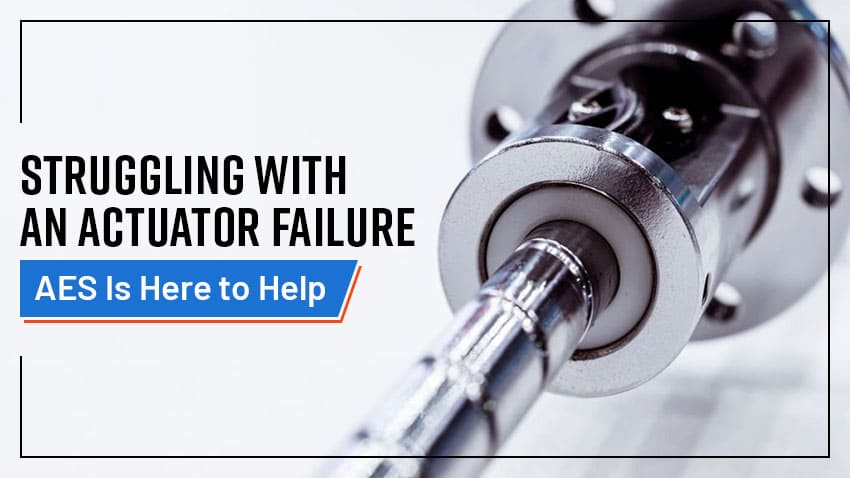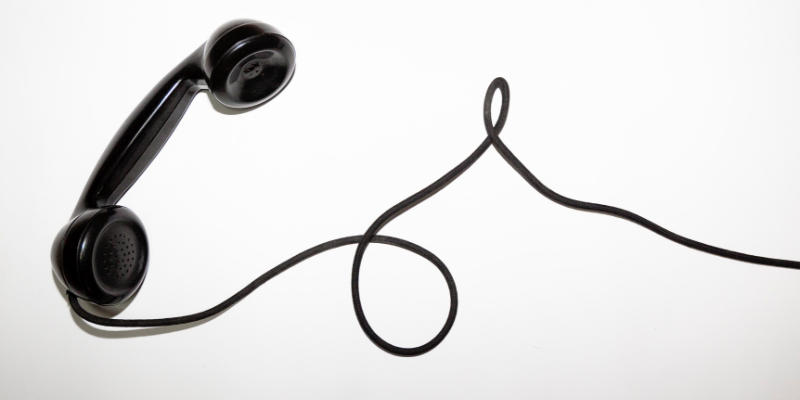Struggling with an Actuator Failure? AES is Here to Help!

Actuators Are Everywhere
Actuators are present in pretty much every motor or machine you can think of. They serve to deliver mechanical power where it’s needed, and keep everything humming along smoothly. But a faulty actuator, or a situation where you need actuator repairs or actuator reconditioning services, can ultimately keep your equipment from moving or being productive in the way you need it to. Advanced Electronic Services has provided electronic gear repair, along with other electronic repairs, mechanical repair, hydraulic repair, and pneumatic equipment repair for many years. In fact, AES has been in business for 30 years, so if you’ve got an actuator that seems to acting up, you’ve definitely landed on the right page.Our skilled repair technicians can get your actuator actuating properly again – we do it every day!
What is an Actuator Exactly, and How Does It Work?
Simply put, an actuator is a device which helps to convert energy into motion.Actuators are used on all sorts of machinery, including electric, hydraulic, and pneumatic. An actuator works within a particular application to convert a type of force into a desired mechanical action. Actuators can be found in everything from electric motors, to combustion engines, to robotics, to production machinery, to hydraulic equipment, to all manner of vehicles and transportation equipment.
Understanding Hydraulic, Pneumatic, and Electric Actuators
While all actuatorsare designed to convert energy into mechanical motion, there are several types of actuators designed to serve different functions. For example, alinear actuator produces straight-line motion, while a rotary actuator delivers circular motion. The particular type of powersourcefor specific actuators varies as well. Three of the most common categories of actuators include hydraulic, pneumatic, and electric.
Hydraulic actuators
Hydraulic actuators take advantage of the properties of dense fluids to magnify force and create a dedicated force of physical movement. One advantage of a hydraulic application is that it can produce more force than a pneumatic or electric device, and it also is able to maintain that force over a greater distance. Hydraulic systems are necessarily more complex as well, and tend to require more maintenance than other types of actuator systems.
Pneumatic actuators
Pneumatic actuators work in a similar fashion to hydraulic actuators, except that they rely upon pressurized air rather than on fluid pressure. These actuators aren’t as complex as hydraulic actuators, take up less space, and generally require less maintenance. The downside of a pneumatic system is that it can’t generate as much force as a hydraulic system, and as a result doesn’t provide quite as much production power.
Electric actuators
A third type of actuator is the electric actuator. These are the most precise of the three, and there’s no worry of any leaks. Electric actuators do carry some more caveats as well. They tend to be more expensive, require large motors to generate the necessary force, and carry greater potential for overheating.
Where Do Actuators Fail?
Most actuators operate by allowing for the automated movement of valves within a system. As valves are opened and closed by the actuator, more or less force will berequired to create the necessary motion for your system. If your valve actuator isn’t working right, there could be several factors in play. Here are some of the most likely culprits:
The valve or valves themselves
Whenever there’s an issue with an actuator, the problem may really be with one or moreof the valves. Valve stems become worn out, the packing can seize up, the valve may have picked up an obstruction, or the valve itself could be experiencing too much torque.
The valve connection
Another common issue is with the actuator connection to the valve; this often takes the form of an actuator drive nut. A worn-out or faulty drive nut isn’t able to move the valve stem properly.
The center column drive
The actuator opens and closes valves by acting upon the respective valve stems. This is accomplished through the action of the center column drive. These center column drives can and do break under certain extended conditions.
The motor contactor
Where it concerns an electric actuator, there’s an internal contactor which “tells” the actuator to either open or close the valve, based upon received input signals. If your motor contactor is faulty, then your actuator won’t be able to respond.This could just be a fuse issue, or it could be a situation where component repair or replacement is warranted.
The electric motor
As stated above, an electric actuator relies upon an electric motor to provide needed torque. Over time, issues like overheating or stress can and do causeelectric motors to fail. If this is the case, electric motor repair or rebuilding may be necessary.
Actuator Repair & Maintenance Services from AES
The best way to keep an actuator functioning smoothly is to show itsome regular TLC.A well-maintained actuator will serve you much longer, and is much less likely to experience a premature failure. Here’s how AES can help:
Seal Evaluation
Hydraulic and pneumatic actuators rely upon tight seals to function correctly, and to prevent fluid and air leaks. We’ll check all your seals to make sure they’re set properly & are in good condition, and we can replace any that aren’t!
Ring & Wiper Appraisal
Excessive wear of rings and wipers can compromise the effectiveness of your actuator. We’ll check all of these items, and will replace them as needed.
Bushing Assessment
End bushings are another important actuator component that need periodic evaluation. Even under normal usage, bushings can and do wear out. We can inspect and replace bushings as needed.
Port Examination
Your actuator’s pressure and return ports need checking, too. If there are any signs of damage, we’ll make necessary repairs to keep your actuator functioning smoothly.
Rod Inspection
Don’t forget about your actuator rods. A rod that’sdamaged can quickly lead to actuator failure. The rod substrate itself could still be in fine shape, but the surface has become worn andneedsrechroming or refinishing. Our team restoresrod surfaces to like-new condition!
Connect with AES for Any and All Actuator RepairServiceor Maintenance Needs
Ready to get your actuator or actuatorsbackonline, so your equipment can continue to keep things moving in the right direction for your operation, and ultimately for your business? We’ve got you; AES has it covered!We provide actuators repair services, and also take care of most any electronic repair, mechanical repair, hydraulic repair, servo repair, and kiosk & printer repair.
Got questions? Ready to get started? You can connect with us online here, or for an even faster response,you can simply give us a call at (866) 386-1001 today!
At AES, we don’t just work to fix your stuff. We work to make your business work more smoothly for you!






